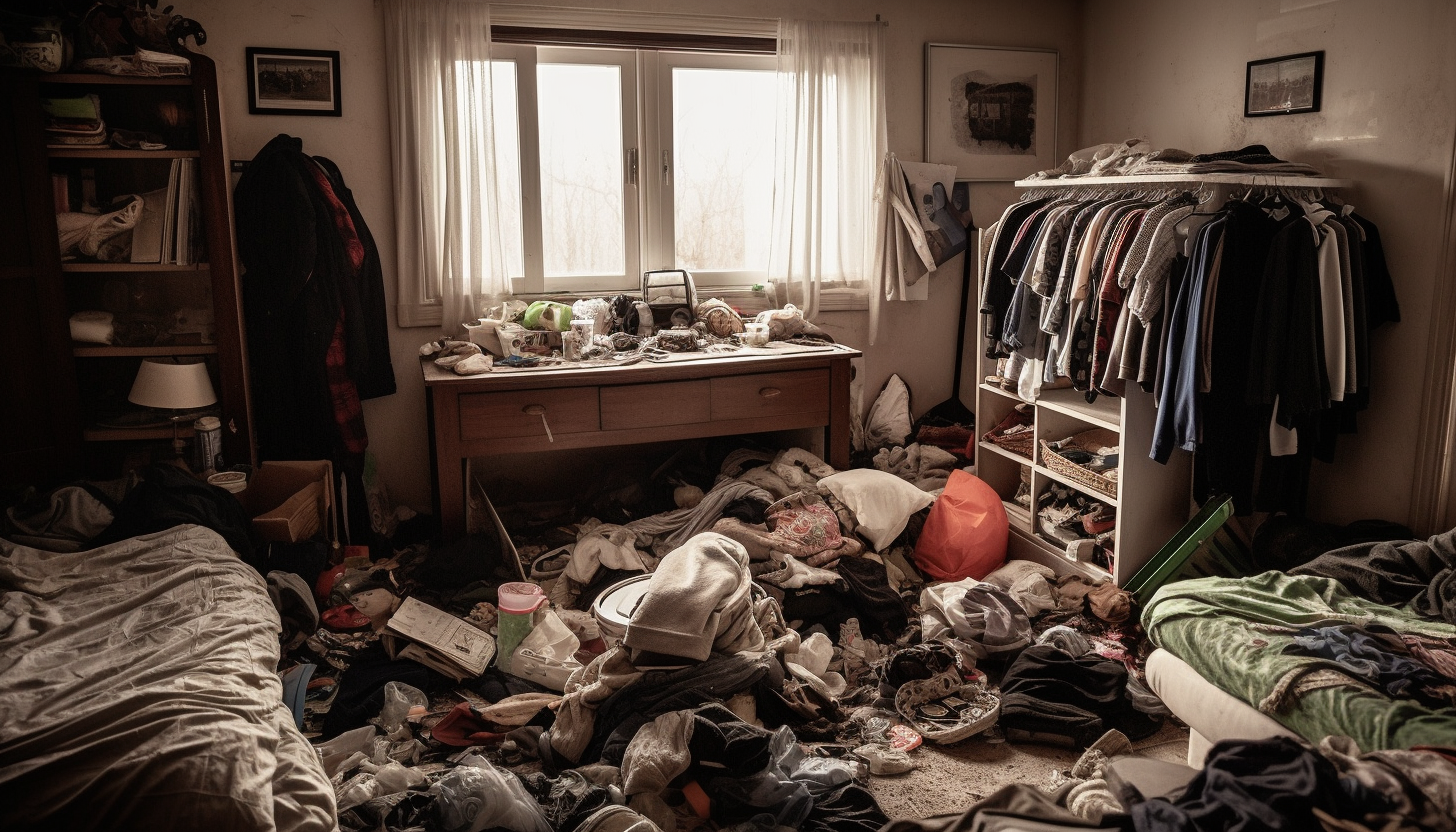Why a messy room quickly becomes a disaster
It’s interesting how quickly a room can change from messy, just a few items strewn about, to a complete disaster. Common sense would dictate that the transition be much smoother than it is.
When a room is marginally messy, it’s strewn about with non-garbage items. Maybe some clothes and books on the floor. When we look at it, we immediately recognize that all these items are simply in the wrong place and it could be brought back to neat in a few seconds.
Garbage, which I define as anything that would be thrown away when cleaning up, eventually makes it into the disorganization of the room. With small amounts of garbage, it’s still visible that most items in the room are just misplaced and some of it can be thrown away. When garbage reaches a certain percentage of the items, say 20%, we can no longer glance at the room and differentiate non-garbage from garbage. The room looks like a disaster.
This theory sharpens the threshold by making the argument that increasing the small percentage of garbage from 15% to 20% “corrupts” the other 80% of non-garbage items in our mind. Without being able to glance at a room and determine which items can be quickly picked up and which can be thrown away, it looks like a confounding disaster.
The testable prediction this theory makes is that you can make your disaster of a room appear only slightly messy by simply indexing in your imagination the locations of all the garbage items. Or, if you’re especially ambitious, disposing of some of the garbage.
